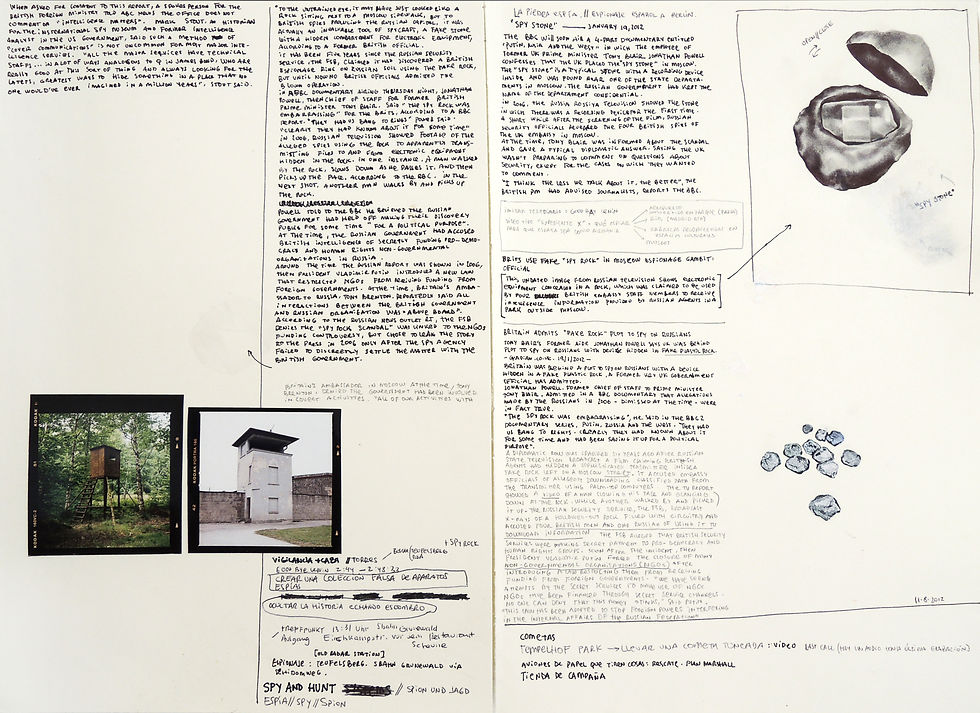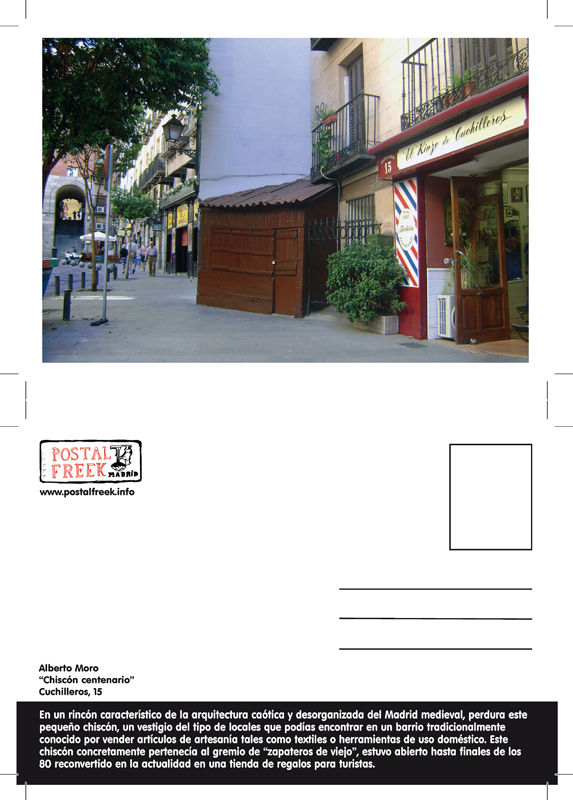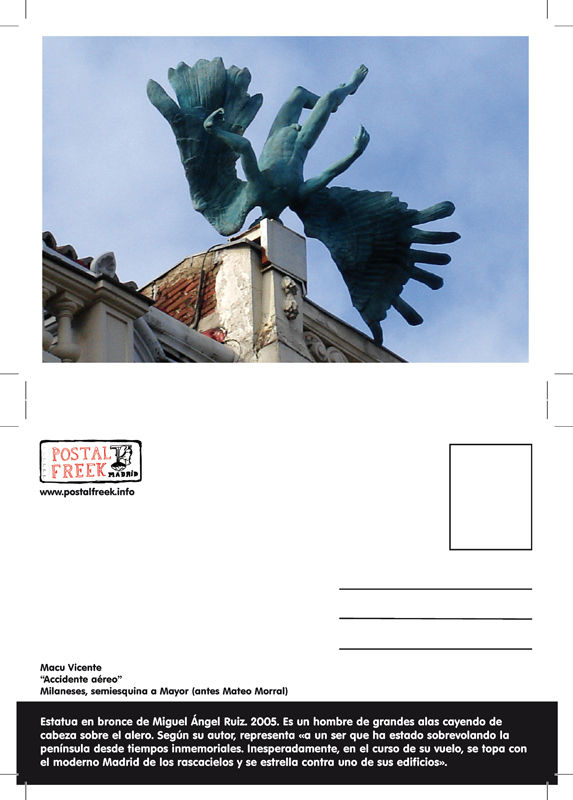Madrid Procesos '12
Chús García-Fraile: "Lampadarios G9"
Of Madrid, Chus García-Fraile (1965), was one of the four selected
when editing Madrid Procesos '12 / Madrid, for his project "Lampadarios G9".
The project is a photographic reproduction of three religious Lampadarios where classic candles are replaced by other color forming three flags of the countries of the G20 group of leading industrialized countries weighing political, economic and military is very relevant globally. Continuity project has just started and that:
1. Physical realization of 3 Pieces Lampadarios wrought iron black lacquered they already produced.
2. Video which shows the flag of Belgium with lighted candles to its total consumption.
3. Views that would be produced in lightboxes Led technology, representing the flags of France, Japan and England in this case are real candles (help requested). The wrought iron Lampadarios black lacquered candles are made from 5 cm x 5 cm are custom (made in China) dyed wax but the flame is replaced by a flashing LED to avoid problems of durability and can be exposed to a Simple on / off, where the electronic engineer have connected. Pictures are made with natural wax candles and reproduction in lightboxes Led technology (attached sketches).
It would be very important for me to get this help as I have scheduled an exhibition in Barcelona DNA Gallery this fall and without me would be impossible yuda these photographic pieces that would complete the installation so far consists of the 3 Lampadarios iron, plus a video.
The customs and aspects of our culture are religious in origin (simply by tradition).
However, I would like to raise the question of whether political ideologies could be considered the new religions or at least are often laden with religious concepts.
Ideologies often claim to be "philosophies" unequivocal, pretending to know the truth and to explain everything from the past, the present and the future in this regard draw parallels with other religions, both promise a final state, perfect and ideal. The basic difference is that Christianity promises such as after death and in heaven, while they promise political ideologies in life and in the world itself.
Another important similarity can be found if we consider one of the conceptions of religion Feuerbach: God creates a man before whom subordinates. The same can be likened to capitalism (capital creates man and this one dominates) support the creation (in some way
"Create") of a state whose leader acts as "God" and to which are subordinated. The difference, again, is of a worldly / earthly above: God is beyond human reach, while the leader is a more deadly.
An important difference is that, in theory, beliefs do not aspire to possess political power, while political ideologies have this same main objective. Although it seems a considerably important difference, it's actually a very ethereal difference: control ideologies human life, especially the material, but also (especially in the ideologies that we have taken as an object of analysis) the spiritual. The dogmas but do not hold political power, also exerts a government: the spirit, and exercises) with such convincing power that affects the material and even political life. The believer is subordinated to their beliefs.
At the time when the doctrines gain power becomes a source of political influence in the same institution or policy, forming lobbies or pressure groups. The social structure of the Church is highly politicized and find a way to control the political power of the state.
Before you excommunicated, now you throw the party. Can be considered political ideologies as new religions?






Rubio Infante
Paula Rubio Infante (1977, Madrid) has a degree in Fine Arts from the Universidad Complutense de Madrid, lives and works in Madrid, and all his
work can be seen on his website: www.paularubioinfante.com.
In 2012 has been selected for "Madrid Procesos 2012 / Berlin" Artist in Residence at AVAM Hofer Karl G.
While in residence in studies KHG in Berlin, two projects have been completed ("Critical + Automatic" and "Klinker Werk") and have begun three ("Spartacus League", "History shapes" and "Spy stone").
Completed projects:
Critical + Automatic is a reflection on the current socio-economic crisis in the Democratic Western Europe, whose home is in speculative activities related to the housing industry. The speech of the project will revolve around two concepts: housing and cultivation of cannabis. Through a series of drawings and one installation relates brick and cannabis, referring to so-called "toxic assets". The installation consists of 8 pieces of bricks resting on a hydroponics system "in door". The place they should occupy the marijuana plants is occupied by brick work, receiving water, electricity and steam to promote intensive development. This set was lit with one lamp reflector 400w.
Overall dimensions: 120cm.anchox200cm.largox200cm.alto. Edition: unique work. Technique: Bricks + hydroponics system (includes a support structure 10 pots of 15 liters each, a pump, a tank and a pipe system for supplying irrigation water and nutrients, a humidification system for steam water, 12 plastic pots).
Klinker Werk is a reflection on the current socio-economic crisis in the Democratic Western Europe, whose home is in speculative activities related to the housing industry. The speech of the project revolves around two concepts: housing and the consequences of becoming the "market" on the real economy. Through a series of drawings and 2 interventions shown symbolically, how the domestic economy of millions of Spanish households is "suffocated" by the consequences of the "speculation" in Spain. The first intervention was placed on a white common couch block 90cm.x80cm.x60cm bricks. Taking the place of one of the family members. Overall dimensions: 180cm.anchox90cm.largox120cm.alto. Edition: Unique work. Technique: bricks, cement + couch. The second intervention was partially walled up with bricks common comfortable wood, so that the drawers and thus the usefulness thereof was compromised. Overall dimensions: 70cm.anchox110cm.altox80cm.largo. Technique: bricks, cement + wooden dresser. Edition: unique work.
Spartacus League: This is a photographic series that documents the current appearance of the flowers that grow on the graves of Rosa Luxemburg and Karl Liebknecht in Berlin. The part of this extensive project photo series and try to delve into the different control strategies adopted by various social movements and throughout history to generate revolutionary processes (eg the "Carnation Revolution" in Portugal and "March of salt "in India) and what may be the future in the sense of civil uprisings taking place today in Spain. The project is under development, counting time with said photographic series (original format color negative 120) and a series of four drawings so far.
History shapes: From photographic record of the autopsy table the Sachsenhausen concentration camp in Berlin, proposed the construction of a series of sculptures which faithfully reproduces the photographed item in some aspects (building material, color, dimensions, etc. .) but its shape is varied. The intention is to highlight the idea that the "history of repression and violence" of states is repeated, but so dumb. The events and social, economic and political violence surrounding this change (represented by a particular element, in this first case: the autopsy table), but it is clear that there are only "formal small mutations" that disguise the same content: States have needed and require the use of punitive force, control and guarantee-that criminalization and eliminate any dissident attitude and to remain in power. The project is under development, counting time with said photographic image (original format color negative 120) and a series of 3 drawings so far.
Spy Stone: From a 2006 story where the Russian government denounced the placement of a "spy stone" in his capital by the British government has gathered information and performed a series of photographs documenting the remains of the systems used espionage during the Cold War in Berlin (Teufelsberg, watchtowers of the Wall, etc). The intention is, again, to propose a reflection on the intelligence and control systems today, linking to those used in the not so bygone. The project is under development, counting time with said photographic series (original format color negative 120) and a series of 3 drawings so far.


























Tomás Pizá: "Ausghedent"
Thomas Pizá (1983, Madrid) degree in Fine Arts from the Universidad Europea de Madrid in 2009, and Architect in 2012. In addition also has supplementary training in the workshops of Juan Ugalde, Azucena Vieites, Eugenio Ampudias, Sergio Rubira, and Oscar Molina. Based in Madrid.
In 2012 has been selected for "Madrid Procesos 2012 / Berlin" Artist in Residence at AVAM Karl Hofer G, for their project: Berlin Ausgedehnt.
How far does Berlin?, Anyone is able to trace the contours of a contemporary city?, According to many authors the city is a diffuse phenomenon in space, but perhaps also in time and geography, cities are perhaps footprint left on our mind and returning us home after a trip.
The project consists of several stages:
1 - Research: a process in which they investigate abandoned places in Berlin and collect information about each place and its history.
2 - Travel: realization of the route chosen in the previous step and documenting every stop of the way through digital photographs.
3 - Documentation: collecting all materials obtained during the same trip and organization:
- Printing of posters for further exposure in public space.
- Creation of a travelogue.
http://lamolesquine.blogspot.com/
It will establish a number of guidelines on how I like to study the city through a pictorial experience, it is not a closed text but a travel guide modifiable or extendable in the course of it.
The city is perhaps a point vibrates in space where data points are accumulated laden with meaning for us, and differ from the "field" or the other because we are able to decode, wherever there is a high intensity of information, there city.
The city is not an enclosed space, it is a space that transcends the space to become a multiple reality of social and economic relations, but also sentimental and semantic.
Believes that the best definition of a city is the point that condenses large amounts of meaning.
The project is based on understanding the city as an element where it accumulates layers of information using the same mechanisms of attraction and visual claim each other in such a way as to generate a landscape without hierarchy, difficult to discern its contours, borderless. He re-created the same pattern as that of the sprawling city like a game of mirrors.
The logic of painting and collage, has a close relation to the practice of urbanism, both strategies maintain a certain degree of freedom in the course of the work performed, but such work is not subject to an uncontrolled chaotic or haphazard as it might seem is the result of a large number of parameters that are shaping every step.
In the first chapter to Berlin) opens a wide spectrum of small stories to the contemporary city environment, multiple look of one who approaches a complex problem.



Colectivo Unofficial Tourism: "Postal Freek"
Under the Madrid Open and under the seal Unofficial tourism (various cultural agents in 2009-10 generated a series of unofficial tourist routes were distributed from a caravan converted into alternative tourism office; www.unofficialtourism.com).
Soon, as a result of the dynamics of such agents are working as a group to further research, working on various issues in tourism Unofficial launching the project rare Tourism (turismoraro.blogspot.com.es) in 2011-12: a tour guide presented in alternative spaces and Slaughterhouse Off Limits which was abandoned in the streets of Madrid.
Heterogeneous group comprising the "Unofficial tourism": Iñaki Larrimbe, Ana Nieto, Mauro Entrialgo, Adriana Herreros, Jorge Díez, Santi Eight Macu Vincent, Guillermo de la Madrid, Jimina Sabadú, John Tones and "Praxis".
The images taken by the members of the group "Unofficial tourism" along with those selected in the competition are a peculiar and heterogeneous collection of fragments of the city of Madrid.
Beyond places topically similar to any city or upon which have been built tourism marketing or speeches of political, social and economic, conveniently tucked behind the cozy blanket of mainstream culture, the underlying multiple cities, is accumulate, cross and confront a contemporary metropolis need different ways of approaching and very different looks.
In this sense, the title neologism merge a popular commercial resource that uses the free distribution of postcards in bars, cinemas, shops, etc., and an assumed position of weirdos that unexpectedly opened some windows in the imaginary unusual Madrid. This is an invitation to look away towards that more everyday around us and in what, despite its uniqueness, many times we do not repair, overwhelmed by the constant barrage of images that invades us from any of the usual windows in special and increasingly the electronic.
Let's take a break to shuffle these cards, find some affinity, as some would find anyone to just keep an eye without prejudice than the usual, except that the casting has been so effectively freak and nothing free, which on the other hand would also merit. And it could be found that encourages artistic bias deep down this and other projects on a voluntary basis, and despite being framed in this area, waive any identification with it, for reasons impossible to address here. As thorny issue deserves at least a contest like this, if only to address it for once in a fresh and spontaneous.









